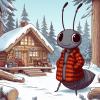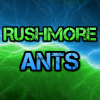
Found and tubed on June 6, 2025 in southeast MI, photo taken same day. As of posting this today, did my first check-in, had a pile of 7 eggs neatly stacked underneath of her. Covered her tube and put her back in her storage compartment. Didn’t take a picture, confirmed her condition and environment were solid and then tried to get her back in the dark and quiet as quickly as possible. Incredibly hard to resist the temptation to not spend time closely examining her, her brood, and otherwise hassling her.
Temperature: 74-79 degrees Fahrenheit
Enclosure: 16x150mm test tube setup
Sent from my iPhone using Tapatalk





















